Exclusive Interview with Heat 6 Winner Of Sky Arts Portrait Artist Of The Year
Posted by Cass Art on 20th Feb 2018
This week nine more professional and amateur artists set up their easels at the Wallace Collection in London, for their chance to become ‘Sky Arts Portrait Artist of the Year’, win a £10,000 commission and £500 of art supplies from Cass Art. Tasked with creating a portrait in just four hours from a live, celebrity sitter, Heat Six saw three more muses take their positions; actors Sope Dirisu, Claire Skinner and Kenneth Cranham.
We interviewed Danny Howes, winner of Heat Six, to find out how things went and talk about his work beyond the show…

Tell us about yourself, where do you live, what’s your background and how long have you been an artist?
I have roots in the Midlands and the North-West, studied in Leicester, and currently live and work in Birmingham. I’ve been painting and drawing as far back as I can remember, my Gran bought me my first set of oil paints for my ninth birthday, opening up a whole new world of colour and texture for me! I have always sold my work but have been working about eight years now as a full-time professional.
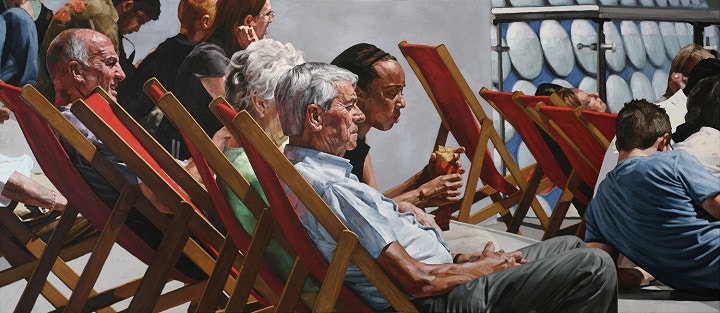
You were previously a graphic designer, what made you decide to focus on painting and has graphic design influenced your work?
It's more the other way around really as I was an artist before a graphic designer so my art practice and influences back then definitely influenced my design style. I had a number of very dull jobs in-between (laughs) but always knew I wanted to be a professional artist once the time was right.
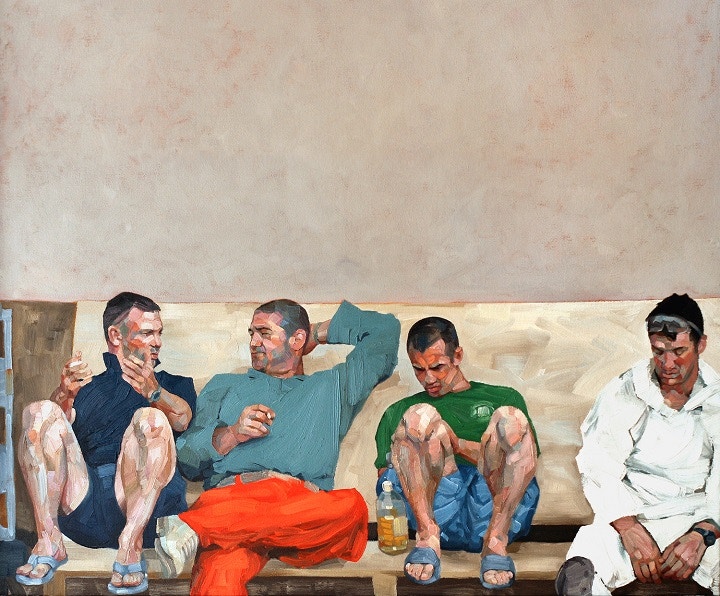
Frank Skinner mentioned the narrative in your submission piece with the Van Gogh calendar in the background and the clock signifying working late. How important is narrative in your work?
Storytelling and context is very important to me but I do go through phases from creating purely observational portraiture to creating paintings with lots of figures and strong narratives. I‘ll often let the subject or situation dictate the narrative, so if there is a story to tell I will attempt to capture it even if it seems quite everyday or mundane – like the clock in my self-portrait, I ended up finishing the painting quite late so painted the time on the clock last to illustrate the fact I often work past midnight.
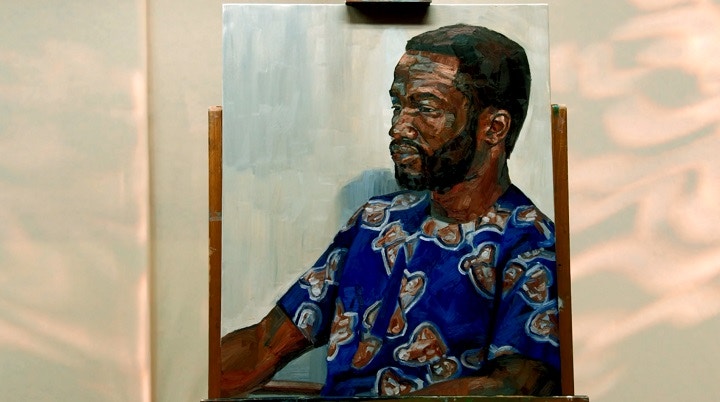
What did you find particularly interesting about painting Sope Dirisu?
Sope was the perfect sitter and was a real pleasure to paint. He is a warm confident guy with a rather enigmatic expression which I tried to capture straight away. Sope’s skin tones were a wonderful challenge too as dark skin can reflect more light and colour from the surroundings, meaning you often see warm dark colours sitting next to cool bright ones – I think I managed to see and capture that quite well in my portrait.

How did you feel about painting in front of a live audience, and did you adjust your style to be able to complete the painting in just 4 hours?
Working in front of an audience and film crew was a lot of fun, there was a real buzz in the room and I actually found it quite invigorating! I noticed some of the other artists were listening to music to block out the distractions but I wanted to take it all in and enjoy the unique experience. I think this actually helped me paint more quickly than usual so although I was mindful of the time I didn’t change my approach too much. Listening to comments from the audience behind me as I painted was fun also!
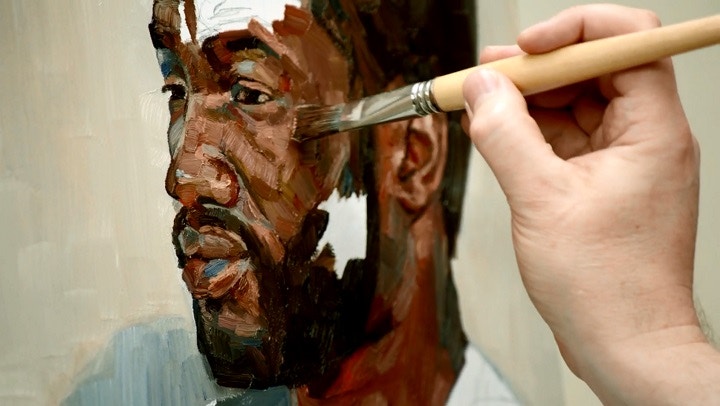
You talked about how skin reflects light and absorbs light all at the same time, and how finding the colours that pop out and make the painting come alive is the most interesting thing for you. Some people struggle to paint skin tones, finding it difficult to mix the subtle variations of colour. Could you talk a bit about which colours you use for portrait painting and do you have any tips?
I try not to be too analytical about my palette and am quite intuitive when mixing colours. I use a fairly standard set of colours for skin tones; sienna’s, umber’s, ochre’s, ultramarine etc, as well as a few less well known hues like gamboge and caput mortuum. I never pre-mix the colours I might need instead allowing my palette to evolve, mixing and adding colour as the painting evolves. As for brands I prefer Michael Harding, Old Holland and Seymour, mainly because I find the intensity of the pigments and the way the colours mix and interact suits the way I paint.

The judges talked about your work having similarities to Cezanne’s, do you agree and which other artists both historical and contemporary inspire you?
Yes it was quite amazing to be compared to Cezanne! Most people are familiar with his landscapes but his portraiture is wonderful too, often with big gestural brushstrokes and thick paint – so yes I can see the similarities. Lots of artists are a constant source of inspiration for me, some of the main ones are Vermeer, Caravaggio, Van Gogh, Lucian Freud, Joan Eardley, Euan Uglow, Jenny Saville, Frank Auerbach, Odd Nerdrum... too many to mention really.

Your work is very painterly, you use directional brush marks to help mould the planes of the face, which brushes do you prefer to use and why?
I like to apply the paint fairly thickly so it has an almost three-dimensional quality. This is the most exciting part for me, when the brush pulls and drags through the paint across the canvas and then a nose, or an eyebrow, or earlobe appear! If it doesn’t look right I just do it again until it does. I use the biggest brush possible for each area I’m working on, typically using long flat and long round hog brushes as they have a bouncy feel and I can load them up with lots of paint. I use all sorts of brands as long as they are hard wearing but ProArte and DaVinci are probably my go-to brushes.
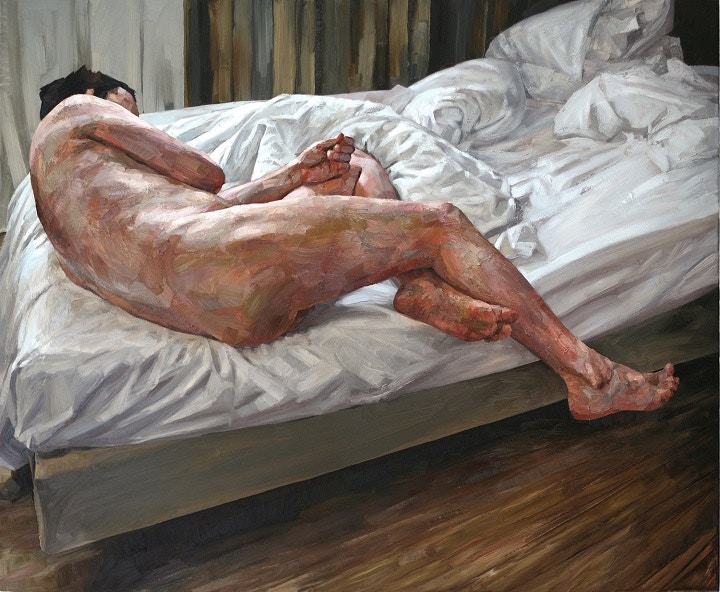
A lot of artists work across the whole canvas, building up layers of paint, but you seem to work on each area and cover the canvas in one layer, why do you prefer this method? Can you talk us through your process?
This is a tricky one to answer as I don’t really have a conscious process in mind when I start a painting. I have a general plan and an idea of how I want it to look when finished but it’s all very instinctive – I look at the subject and ‘see’ it on the canvas as I work, letting my mind and paint and brushes just flow! I want my paintings to feel spontaneous and dynamic, so if I have made marks and brushstrokes that have those qualities I try not to cover them up with more layers.
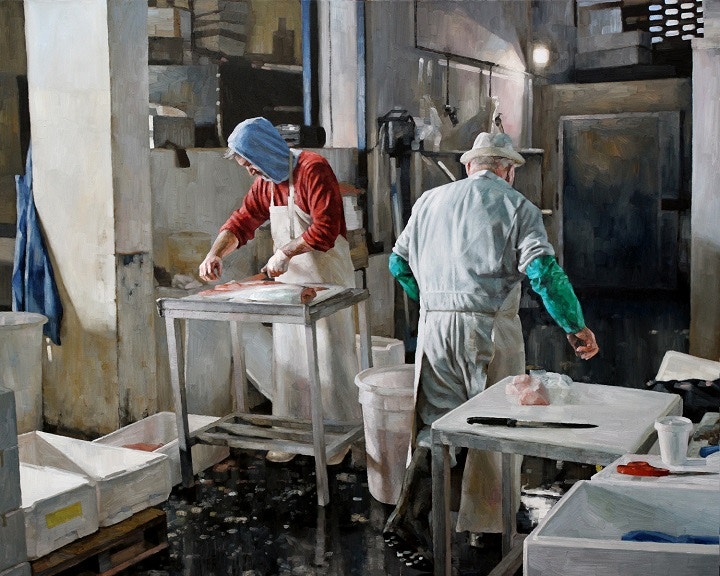
Tell us a bit about your other artworks. What subjects interests you?
Primarily I’m a painter of people in just about any situation or location. Portraits are my first love really but I’m particularly drawn to street scenes and people in their work environments, which is where a strong narrative element often comes into play.

What advice would you give to other artists thinking of applying to take part in Sky Arts Portrait Artist of the Year?
Don’t over-think it. The human face is the most natural thing for an artist to paint so just relax into it and try not to get distracted by the finer details. And definitely do some practice 4 hour self-portraits... if it usually takes you 20 hours to paint a portrait you might surprise yourself with how much you can get done in 4!
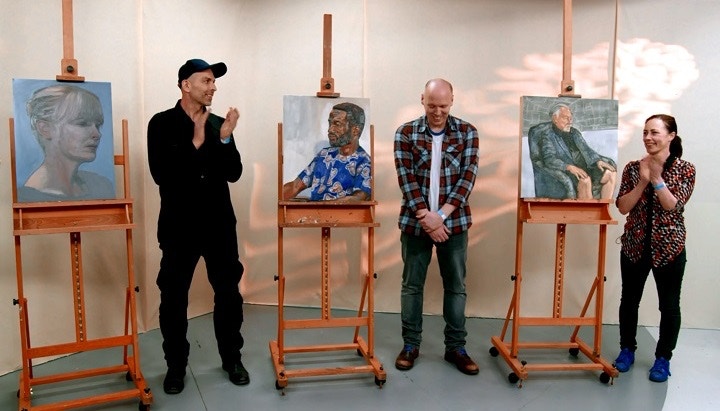
Feeling Inspired?
Discover more of Danny’s work on his website dannyhowes.com or follow him on Twitter and Instagram @dannyhowesart



